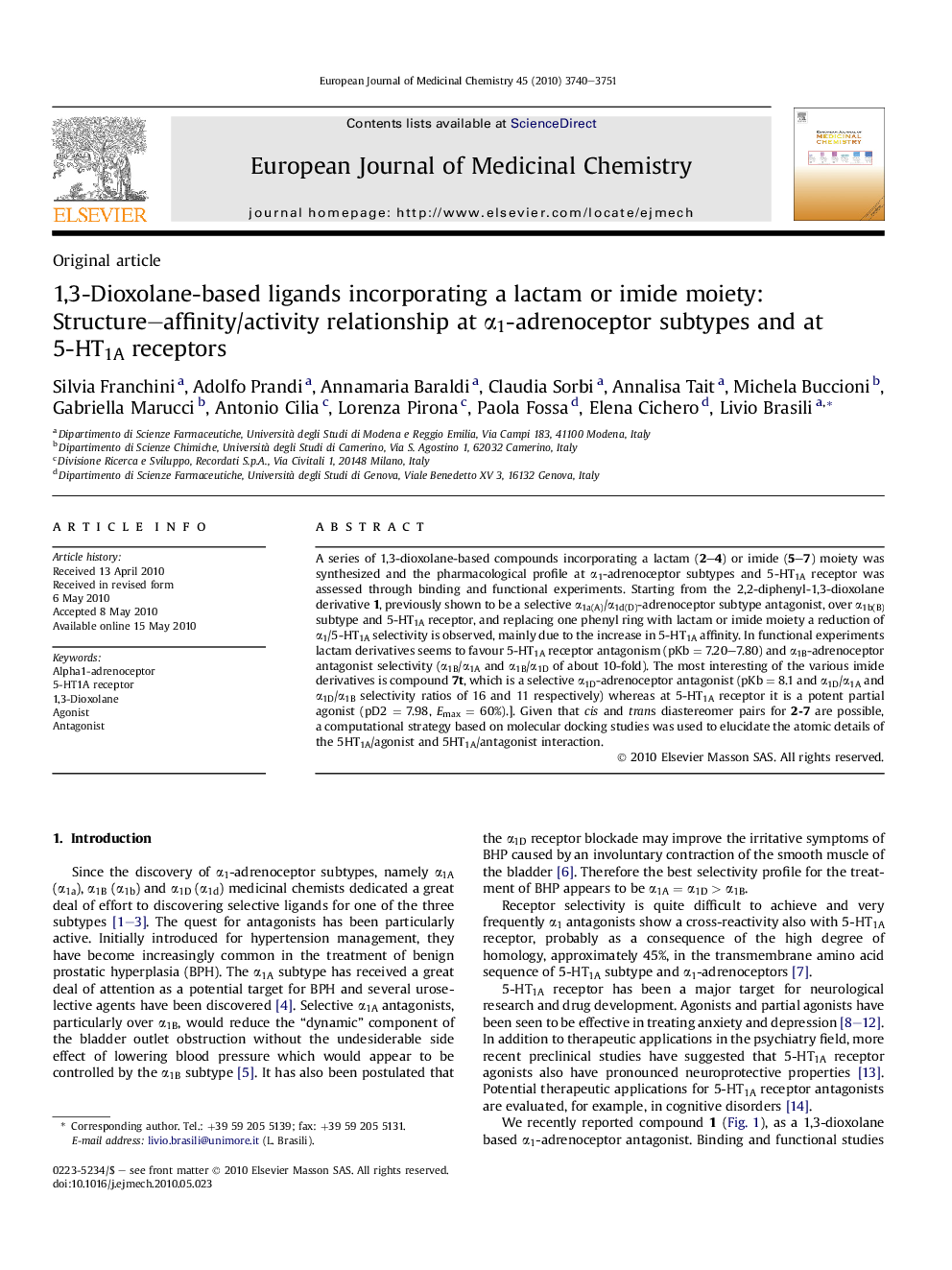| Article ID | Journal | Published Year | Pages | File Type |
|---|---|---|---|---|
| 1394764 | European Journal of Medicinal Chemistry | 2010 | 12 Pages |
A series of 1,3-dioxolane-based compounds incorporating a lactam (2–4) or imide (5–7) moiety was synthesized and the pharmacological profile at α1-adrenoceptor subtypes and 5-HT1A receptor was assessed through binding and functional experiments. Starting from the 2,2-diphenyl-1,3-dioxolane derivative 1, previously shown to be a selective α1a(A)/α1d(D)-adrenoceptor subtype antagonist, over α1b(B) subtype and 5-HT1A receptor, and replacing one phenyl ring with lactam or imide moiety a reduction of α1/5-HT1A selectivity is observed, mainly due to the increase in 5-HT1A affinity. In functional experiments lactam derivatives seems to favour 5-HT1A receptor antagonism (pKb = 7.20–7.80) and α1B-adrenoceptor antagonist selectivity (α1B/α1A and α1B/α1D of about 10-fold). The most interesting of the various imide derivatives is compound 7t, which is a selective α1D-adrenoceptor antagonist (pKb = 8.1 and α1D/α1A and α1D/α1B selectivity ratios of 16 and 11 respectively) whereas at 5-HT1A receptor it is a potent partial agonist (pD2 = 7.98, Emax = 60%).]. Given that cis and trans diastereomer pairs for 2-7 are possible, a computational strategy based on molecular docking studies was used to elucidate the atomic details of the 5HT1A/agonist and 5HT1A/antagonist interaction.
Graphical abstractThe lactam derivatives seems to favour 5-HT1A receptor antagonism and α1B-adrenoceptor antagonist selectivity. The imide derivative 7t is a selective α1D-adrenoceptor antagonist whereas at 5-HT1A receptor it is a potent partial agonist. Figure optionsDownload full-size imageDownload as PowerPoint slide
